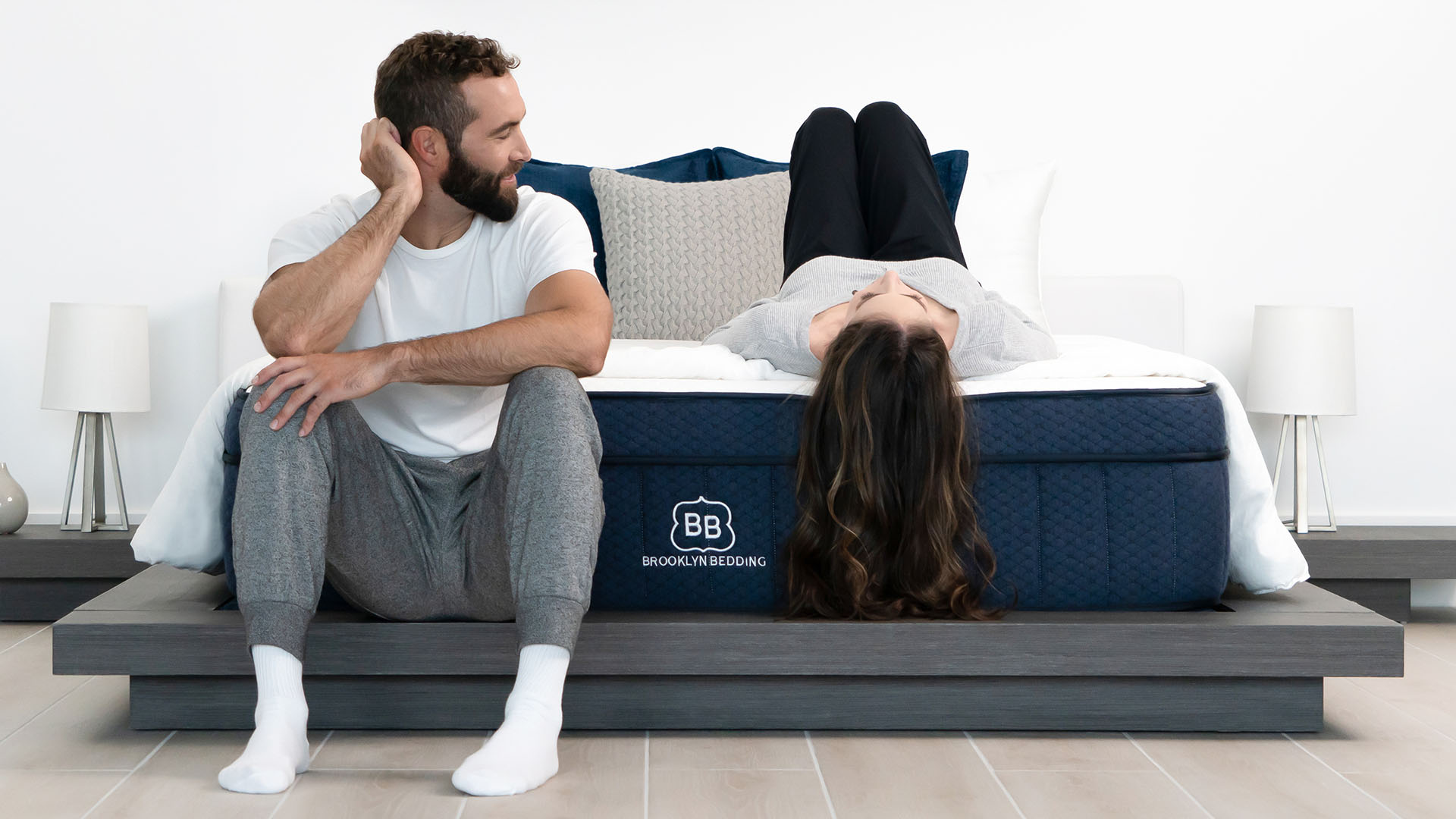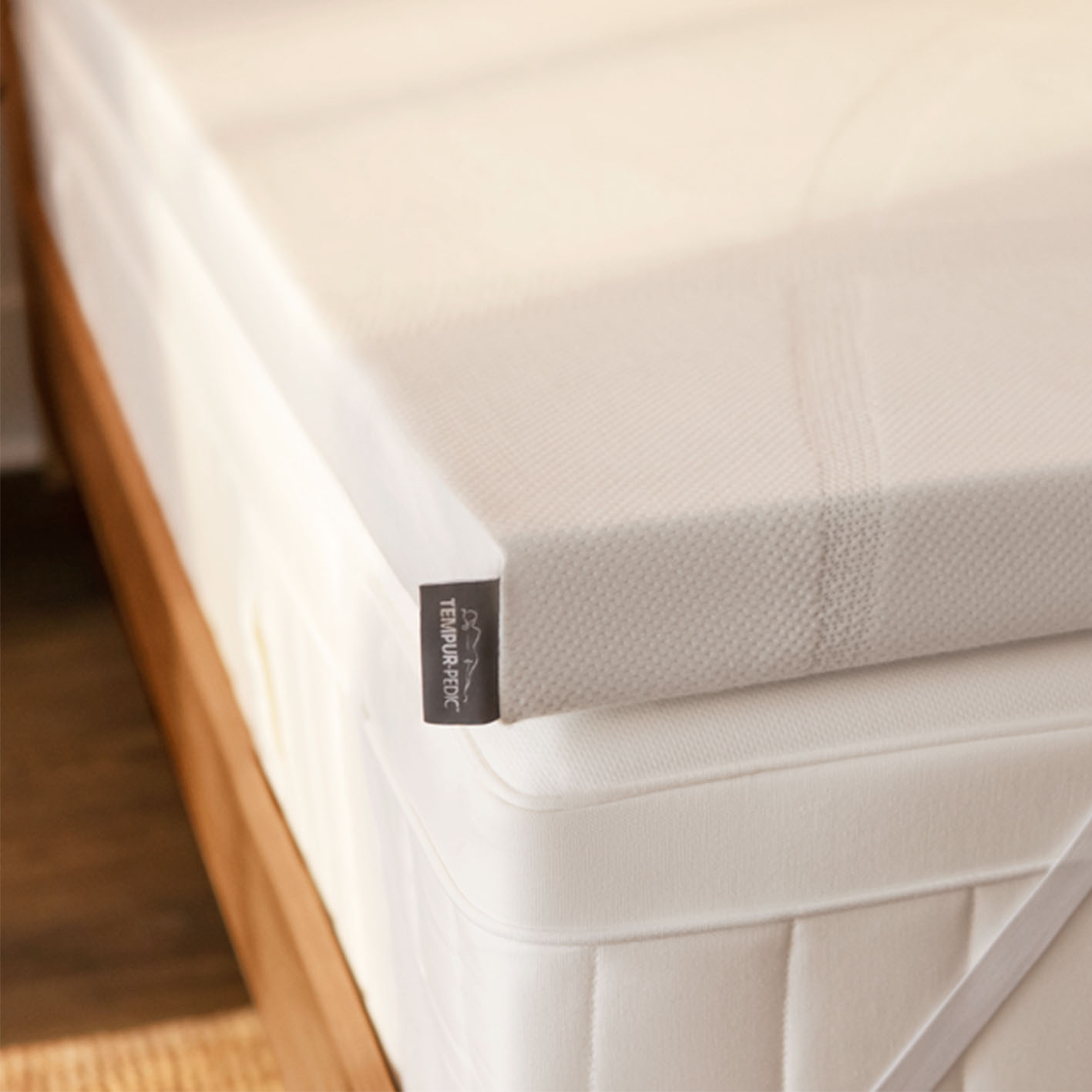Five things to do if your brand new mattress is uncomfortable to sleep on
New mattress uncomfortable? Here's what you need to do

If you’ve just invested in a brand new mattress and it isn’t giving you the blissful night’s sleep you’ve been dreaming of, the chances are that you’ll be feeling a little disappointed. Most of us buy a new mattress hoping for an immediate improvement in comfort, but maybe you’ve found that you’re still not sleeping well and that your new mattress just feels uncomfortable as your old one.
The simple truth is, however, that even the best mattresses don’t always feel great straight off the bat. And there are a number of reasons behind this. The process of breaking in a new mattress can range between 30 and 90 days, which is why most mattress brands refuse to accept your mattress return until that break in period has passed.
In this guide we’ll look at the five things to do if your new mattress is uncomfortable — all of which are worth trying out before you ask for a refund or exchange. These simple tips could help revolutionize your sleep.
Five things to do if your brand new mattress is uncomfortable
1. Identify why you aren’t sleeping well
When we buy a new mattress it’s easy to assume that this is the sole reason we’re not sleeping well. But there are other factors that could be at play here. There are a number of reasons why you might be waking up in the night, or feeling that you’re not sleeping well.
The quality of your sleep environment makes a big difference to how well you’re able to sleep through the night. Besides your mattress, temperature and exposure to light and noise can cause disruptions. A bedroom that’s too hot and stuffy is a big issue so make sure you’re sleeping with breathable bedding. You can also consider investing in a cooling mattress topper for your mattress to help reduce the heat. Simple blackout blinds or curtains will help with any light leakage, or you could just buy a sleep mask to cut out light.
Cut down on alcohol and caffeine consumption near to bedtime, and make sure to get at least some light exercise each day to improve your chances of sleeping well. And if you’re still struggling to sleep, or are waking multiple times in the night, visit your doctor to make sure there aren’t any undiagnosed medical conditions affecting your ability to sleep.
2. Check the mattress is the right way up

This might sound obvious, but with the advent of mattresses in a box it’s not always entirely obvious which way up a mattress should go. Unlike the older style of innerspring mattresses, which could be flipped and slept on both sides, many of the best hybrid mattresses are one way up only. This is because they often have zoned support, or firmer areas around the lumbar region that will only work effectively when the mattress is the right way round (and these mattresses can’t be rotated either).
Sign up to get the BEST of Tom's Guide direct to your inbox.
Get instant access to breaking news, the hottest reviews, great deals and helpful tips.
Many hybrid (and indeed other types of mattresses) are built with specific layers on top, with a base layer at the bottom that provides support. Obviously, these mattresses also only have one side up as well. Our guide on flipping or rotating your mattress offers more advice on the subject.
The right way up is obvious with many mattresses, due to labeling and the color of the color. But if you aren’t sure which way is up, check photographs on the brand’s website to see how the mattress should look or contact them directly for advice. If you’ve ended up sleeping on the hard base layer of a mattress, you’re not going to be getting a comfortable night’s sleep.
3. Check your bed frame
It’s all very well buying a lovely new mattress, but if your bed frame is old or unsuitable, you might as well have not bothered. The wrong type of bed frame can mean that your mattress is not adequately supported, leaving you with a mattress that feels saggy or dips in places.
First things first – check with the brand as to which types of bed frame it recommends for use with its mattresses. If your existing frame isn’t compatible, then you’ll need to decide whether to replace it, or whether to return the mattress and buy one that works with your bed frame.
The vast majority of modern mattresses work well with slatted frames, platform beds and foundations. Some mattresses will also work with adjustable beds. Box springs tend to be less compatible with many modern styles of mattress, so do check if this could be an issue.
We would also caution against placing a brand new mattress directly on the floor. Not only is this likely to provide inadequate support, but it could also invalidate your warranty and lead to a buildup of mould.
4. Request a comfort layer from the manufacturer

If your new mattress is just a little too soft or firm, it’s worth asking the manufacturer is they can provide a mattress comfort layer to make the bed softer or firmer as required. Not all brands offer this, but it’s worth asking to see what -i f anything - is available.
Another great way to change the feel of a bed is to add in one of our best mattress topper selections. A mattress topper is a thick layer of material, usually around two to four inches in depth, that can change the feel of your mattress. In general, and this is a very simplistic overview, a memory foam topper is the easiest way to make a firm mattress softer, whilst a latex topper can add a little firmness and bounce. The Tempur-Pedic Tempur-Adapt mattress topper is our overall favorite but at full MSRP prices start at $319. If you’re on a budget, the Lucid Gel Memory Foam mattress topper starts from a far more reasonable $74.99.
5. Give it at least 30 days
Most manufacturers insist you sleepers trying out a new mattress for at least 30 days before they can initiate a return, which is referred to as a break in period. This is because however luxurious a new mattress is, and however sure you are that it’s right for your sleeping style, it can take time for your body to adjust to it - which means you can’t expect to necessarily feel immediately comfortable.
It’s likely that you’ll have been sleeping on an older mattress that’s started to dip and sag, and our bodies tend to adjust to these uncomfortable sleeping positions and surfaces as best they can. When you get a new mattress that offers support in all the right places, it can be a shock for the body. This is why you need to allow time for it to adjust and for the mattress to begin to break in a little to your body shape.
If, however, after 30 days you still don’t feel that the mattress is right for you, most brands will accept a return or exchange for a different mattress. Trial periods vary from 90 days all the way up to a full year, so make sure to check what your manufacturer provides and ensure you initiate a return within the time frame.

Jo Plumridge is an experienced mattress reviewer with several years' experience covering all things mattresses and sleep, and who tests memory foam, hybrid and organic mattresses. What Jo doesn't know about a boxed mattress isn't worth knowing, so naturally we tasked her with producing a series of features for Tom's Guide looking at all aspects of mattresses, from how to pick between latex and memory foam (it's a tricky one), to the seven mistakes people make when buying a mattress for the first time. When testing the DreamCloud Luxury Hybrid for Tom's Guide, Jo said: "I loved the back support and pressure relief it offered. Plus, it looks far more expensive than it is." When she isn’t writing about sleep, Jo also writes extensively on interior design, home products and photography.
